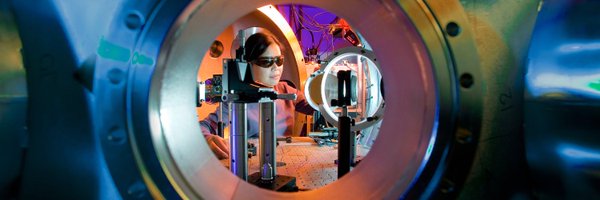 (AGENPARL) - Roma, 30 Settembre 2022
(AGENPARL) - Roma, 30 Settembre 2022(AGENPARL) – ven 30 settembre 2022 A weekly compendium of media reports on science and technology achievements at Lawrence Livermore National Laboratory. Though the Laboratory reviews items for overall accuracy, the reporting organizations are responsible for the content in the links below.
LLNL Report, Sept. 30, 2022
As the Italian probe LICIACube whizzed past asteroids Didymos (bottom) and Dimorphos (top), it captured a debris plume spraying out from the DART spacecraft smashing into Dimorphos. Credit: ASI/NASA.
[An asteroid-smashing success](https://www.nature..com/articles/d41586-022-03067-y)
Telescopes in space and across Earth captured the spectacular aftermath of NASA’s DART spacecraft [crashing into the asteroid Dimorphos](https://www.nature.com/articles/d41586-022-03030-x) on Sept. 26. The smash-up was “the first human experiment to deflect a celestial body,” says Thomas Zurbuchen, NASA’s associate administrator for science, and “an enormous success.”
“We’re all pretty stoked here,” says Andy Rivkin, a planetary scientist at the Johns Hopkins Applied Physics Laboratory in Laurel, Maryland, who works on the mission.
A ringside view came from LICIACube, a tiny Italian spacecraft that flew along with DART and photographed the impact, which took place 11 million kilometres from Earth. LICIACube’s first images, released by the Italian Space Agency on Sept. 27, show a large fireworks-like plume coming off Dimorphos after DART plowed into it. The cloud of rocks and other debris expanded quickly, like a giant puff of smoke.
Studying the plume’s evolution will shed light on the physical properties of Dimorphos, Elisabetta Dotto, LICIACube’s science team lead at the National Institute for Astrophysics in Rome, said at a press briefing. By analysing how the plume formed and dispersed, researchers can calculate how much of DART’s kinetic energy went into ejecting debris from Dimorphos and how much might have gone into altering the asteroid’s orbit — [the goal of the mission](https://www.nature.com/articles/d41586-021-03471-w).
The spacecraft itself is kaput. “A lot of it is pulverized, and some of it is melted,” says Megan Bruck Syal, a physicist at the Lawrence Livermore National Laboratory in California. “It’s hard to say, but I don’t think there will be large chunks left.”
[Read More](https://www.nature.com/articles/d41586-022-03067-y)
Biochar made from almond shells is a byproduct of work done by Merced-based startup Corigin. The material is made by burning ag waste with minimal amounts of oxygen. Photo courtesy of Corigin.
[From biomas to biochar](https://www.bakersfield.com/news/biochar-from-biomass-energy-production-presents-opportunities-questions/article_193e64fc-363b-11ed-9abc-6788f5112a44.html)
Hydrogen energy and renewable natural gas get the most attention, but the push to turn the Central Valley’s ag waste into renewable energy could also boost local production of a byproduct — biochar.
The charcoal-looking substance, created when wood is super-heated in a low-oxygen environment, has been shown in some cases to increase water retention in soil, and can be used as fuel, a water purification component or even a carbon management tool.
Research has shown the material’s characteristics vary widely, depending on the source matter, and not all soil types appear to benefit noticeably from the introduction of biochar. Plus, in the absence of large-scale scientific tests in California across a span of many years, government has not come up with financial incentives encouraging its production and use.
Energy Program Chief Scientist Roger Aines at Lawrence Livermore said it may turn out that the best use of biochar is simply to feed it back into the waste conversion process as fuel for generating the heat required. Or it could be, he said, that it might be best to minimize production of biochar so that more byproduct carbon dioxide can be buried deep underground through injection.
[Read More](https://www.bakersfield.com/news/biochar-from-biomass-energy-production-presents-opportunities-questions/article_193e64fc-363b-11ed-9abc-6788f5112a44.html)
Element 114, flerovium, was discovered by a researcher from LLNL and the Joint Institute of Nuclear Research.
An international research team including Lawrence Livermore scientists has succeeded in gaining new insights into the chemical properties of the superheavy element flerovium — element 114.
The measurements, taken at the at the accelerator facilities of the GSI Helmholtzzentrum für Schwerionenforschung (GSI/FAIR) in Darmstadt, Germany, show that flerovium is the most volatile metal in the periodic table. Flerovium is so far the heaviest element in the periodic table that has been chemically studied.
In the periodic table, flerovium is placed below the heavy metal lead. However, early predictions had suggested that relativistic effects of the high charge in the nucleus of the superheavy element on its valence electrons would lead to noble gas-like behavior, while more recent ones had rather suggested a weakly metallic behavior.
Members of LLNL’s Diffractive Optics Group with four of the 85×70-centimeter HELD gratings to be installed in the ELI-Beamlines L4-ATON laser system. Meter-scale HELD gratings have the potential to facilitate future 20-to-50-petawatt-class ultrafast laser systems.
[Gratings with a punch](https://optics.org/news/13/9/23)
A research collaboration coordinated by Lawrence Livermore National Laboratory (LLNL) has developed new large-scale diffraction gratings that are thought to be capable of delivering ultrashort laser pulses with a power of up to 50 petawatts.
So far the team has produced high-energy pulse compression gratings measuring 85 x 70 cm that will be installed in the L4-ATON laser system at the ELI-Beamlines Facility near Prague in the Czech Republic.

